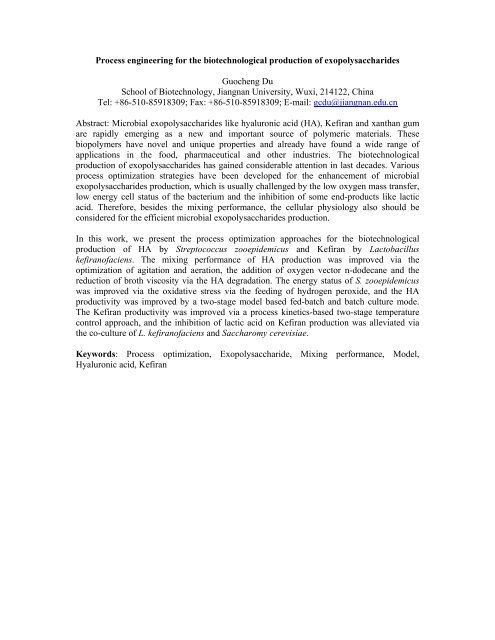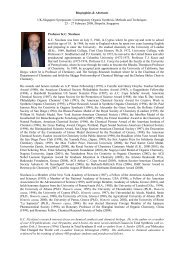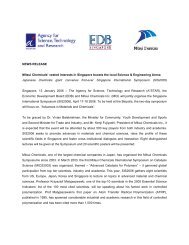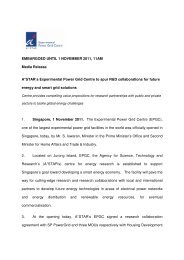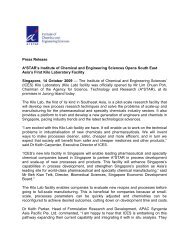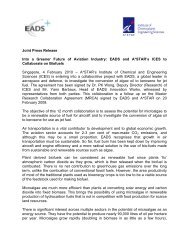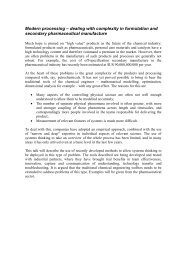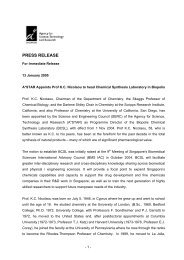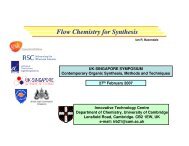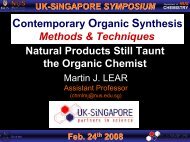here - Institute of Chemical & Engineering Sciences
here - Institute of Chemical & Engineering Sciences
here - Institute of Chemical & Engineering Sciences
Create successful ePaper yourself
Turn your PDF publications into a flip-book with our unique Google optimized e-Paper software.
Process engineering for the biotechnological production <strong>of</strong> exopolysaccharides<br />
Guocheng Du<br />
School <strong>of</strong> Biotechnology, Jiangnan University, Wuxi, 214122, China<br />
Tel: +86-510-85918309; Fax: +86-510-85918309; E-mail: gcdu@jiangnan.edu.cn<br />
Abstract: Microbial exopolysaccharides like hyaluronic acid (HA), Kefiran and xanthan gum<br />
are rapidly emerging as a new and important source <strong>of</strong> polymeric materials. These<br />
biopolymers have novel and unique properties and already have found a wide range <strong>of</strong><br />
applications in the food, pharmaceutical and other industries. The biotechnological<br />
production <strong>of</strong> exopolysaccharides has gained considerable attention in last decades. Various<br />
process optimization strategies have been developed for the enhancement <strong>of</strong> microbial<br />
exopolysaccharides production, which is usually challenged by the low oxygen mass transfer,<br />
low energy cell status <strong>of</strong> the bacterium and the inhibition <strong>of</strong> some end-products like lactic<br />
acid. T<strong>here</strong>fore, besides the mixing performance, the cellular physiology also should be<br />
considered for the efficient microbial exopolysaccharides production.<br />
In this work, we present the process optimization approaches for the biotechnological<br />
production <strong>of</strong> HA by Streptococcus zooepidemicus and Kefiran by Lactobacillus<br />
kefiran<strong>of</strong>aciens. The mixing performance <strong>of</strong> HA production was improved via the<br />
optimization <strong>of</strong> agitation and aeration, the addition <strong>of</strong> oxygen vector n-dodecane and the<br />
reduction <strong>of</strong> broth viscosity via the HA degradation. The energy status <strong>of</strong> S. zooepidemicus<br />
was improved via the oxidative stress via the feeding <strong>of</strong> hydrogen peroxide, and the HA<br />
productivity was improved by a two-stage model based fed-batch and batch culture mode.<br />
The Kefiran productivity was improved via a process kinetics-based two-stage temperature<br />
control approach, and the inhibition <strong>of</strong> lactic acid on Kefiran production was alleviated via<br />
the co-culture <strong>of</strong> L. kefiran<strong>of</strong>aciens and Saccharomy cerevisiae.<br />
Keywords: Process optimization, Exopolysaccharide, Mixing performance, Model,<br />
Hyaluronic acid, Kefiran


